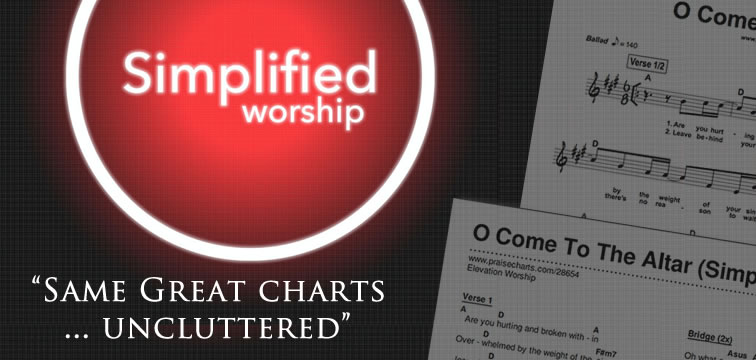Selecting Sunday's Songs-Plan Creatively
Featuring Bob Kauflin Posted on January 7, 2011
Effective leadership involves more than coming up with a song list.
For one, we can vary the way songs are sung. A soloist can sing one verse or a whole song, we can use a choir, or the church can sing responsively with the leader or in groups. Singing congregationally isn't the only way of fulfilling God's command to address “one another in psalms and hymns and spiritual songs” (Ephesians 5:19).
We can also change arrangements, tempos, and song structure. Who says you have to do a song exactly the way it's written? Starting with the chorus or bridge might make a better lyrical and/or musical progression.
We can introduce nonmusical elements as well. Here are a few ideas we've tried or heard about from others:
' Pray for a specific need or situation, followed by a song that reinforcesthe prayer or draws attention to God's faithfulness.
' Have someone share a testimony of salvation or sanctification.
' Share the Lord's Supper, led by a pastor and followed by congregational singing.
' Have a pastor explain the theological meaning behind a word or phrase in a song.
' Change the setup of the musicians.
' Recite together a creed or the Lord's Prayer.
' Change the number and types of musicians. We've led with piano and djembe, full choir, band and string quartet, no drums, three acoustic guitars,band and brass quartet . . . you get the idea. Mix it up.
' Project Scriptures or names of God as you sing.
' Read Scripture before or during songs. You can do this yourself, assign it to your vocalists, have a pastor do it, or ask members of the congregation to read.
' Read a prayer from The Valley of Vision, published by Banner of Truth. It's a gold mine of biblical, honest, gospel-saturated prayers.
' Teach the congregation sign language for a familiar song. It's one more way of engaging our bodies in worshiping God.
' Begin with a scriptural call to worship.
' Read Scripture in different languages. One Sunday, to accent our unity inthe gospel, four people read portions of Psalm 103 in Spanish, Mandarin,Swahili, and English.
' Confess sin corporately. This is usually a powerful time of specifically acknowledging our sins before a holy God, followed by a clear assurance of forgiveness through the atoning death of Christ.
' Include the giving of tithes and offerings in between two songs to emphasize it as an act of worship.
Obviously this is a brief list just to get you started with your own ideas.
Planning creatively takes wisdom. It can easily become a distraction or the main event. Remember that creativity isn't something we do; it's a way we do something. That “something” is magnifying God's glory in Christ.
Plan Realistically
One of our most common mistakes through the years has been underestimating how long portions of the meeting take. Worship leaders are notorious for losing track of time. (Pastors are guilty as well, but let's stay focused.)
Of course, we always go over our time for the “right” reasons. We reallyworked hard on the last song. We felt anointed. The Holy Spirit was just starting to touch people's hearts. People were finally worshiping God!
Staying within my allotted time isn't unspiritual, nor does it mean I'm quenching the Spirit. Actually, working within a time frame is a way of honoring your pastor, serving the church (especially children's workers), and pleasing the Lord.
I used to think the Holy Spirit didn't even show up until the fourth song.Nonsense. The Holy Spirit can be very efficient. More often than not, if we plancarefully and realistically, the Spirit has time to do more than we'd expect.
It's helpful to actually time how long songs take to sing. Listen to a recording of some of your meetings and find out. The general rule of thumb is:Assume you'll go longer than you think. It's better to sing fewer songs peacefully than more songs frantically.
I generally allow about five to six minutes per song for our meetings. Onceyou add in spontaneous contributions, a time of prayer, or a Scripture reading,four songs can easily fill thirty minutes.
Tags: Worship Matters, Worship Team, Worship Planning, Worship Leading, Music, Song Lists
Related Posts
Other Posts Featuring Bob Kauflin
- Why Confession Is Good for Your Soul and Your Church with Bob Kauflin
- Planning Sunday's Songs-Plan Contextually
- Focus on Projecting Lyrics
- Music Should Display Variety
- Hearing Familiar Words in a Fresh Way
- Planning Sunday's Songs-Plan Selectively
- Planning Sunday's Songs
- Planning Sunday's Songs-Plan Progressively
